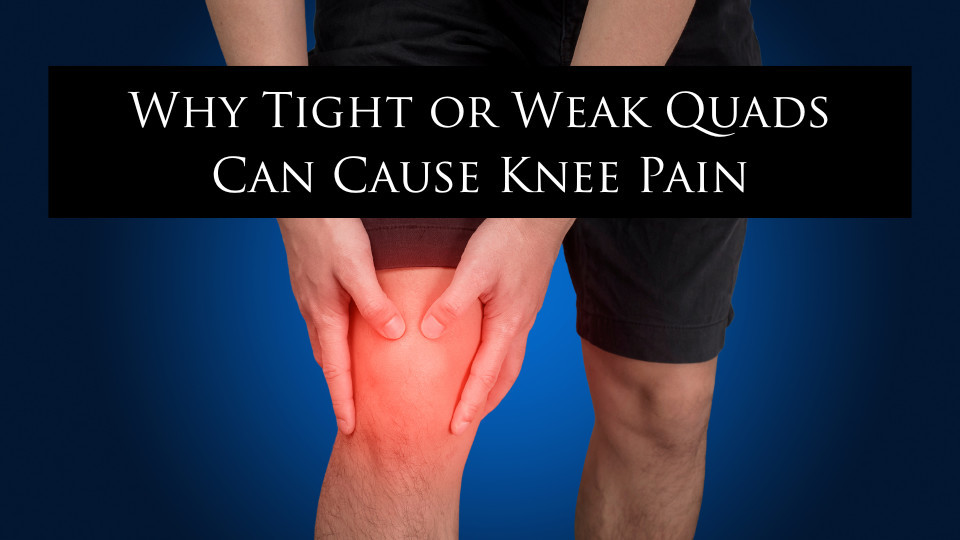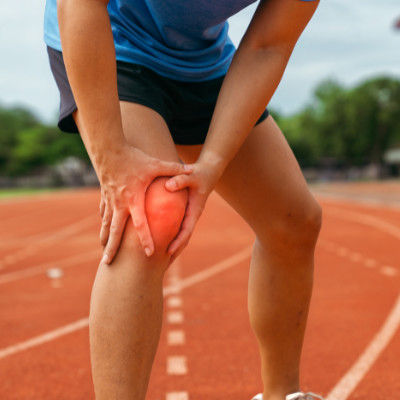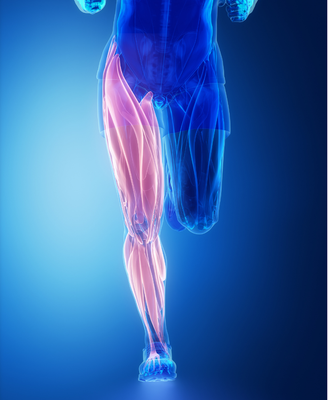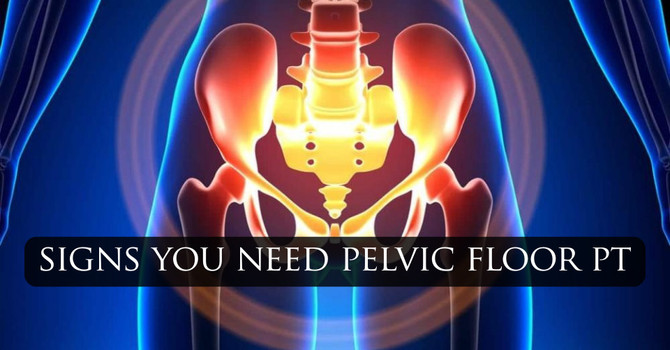
You lace up your running shoes, ready to hit the pavement. Or maybe you’re at the gym, setting up for a set of squats. Everything feels fine until you feel that familiar, unwelcome ache around your kneecap. It’s a frustrating pain that’s common among runners, gym-goers, and weekend athletes alike. While it’s easy to blame the knee itself, the real culprit is often found a little higher up: your quadriceps.

Your quads—the large group of muscles at the front of your thigh—play a huge role in the health and function of your knees. When these muscles are too tight, too weak, or out of balance, they can pull your knee out of alignment and create pain. Understanding this connection is the first step toward finding a lasting solution that goes beyond just resting or icing the joint.
The Mighty Quadriceps: Your Knee’s Best Friend
The quadriceps femoris, commonly known as the quads, is a group of four muscles that run down the front of your thigh. They all come together in a single tendon that attaches to your kneecap (patella). From there, the patellar tendon continues down and attaches to your shin bone.

This powerful muscle group has two main jobs:
- Knee Extension: They straighten your knee, which is essential for walking, running, jumping, and kicking.
- Kneecap Stabilization: They help hold your kneecap securely in a small groove at the end of your thigh bone. This ensures the kneecap tracks smoothly up and down as you bend and straighten your leg.
When your quads are healthy and balanced, your knee functions like a well-oiled machine. But when problems arise, the entire system can be thrown off.
How Quad Problems Lead to Knee Pain
Trouble begins when the quadriceps muscles become either too tight or too weak. This imbalance disrupts the delicate mechanics of the knee joint, leading to common conditions that cause pain.
Problem 1: Overly Tight Quads
When your quad muscles are tight, they can pull excessively on the patellar tendon. This constant tension can lead to several issues:
- Patellar Tendonitis: Also known as "jumper's knee," this is an inflammation of the tendon connecting your kneecap to your shin bone. It often feels like a sharp pain right below the kneecap, especially during activities like running or jumping.
- Poor Kneecap Tracking: Tightness, especially in the outermost quad muscle (the vastus lateralis), can pull the kneecap slightly to the side. This causes it to rub against the bone instead of gliding smoothly in its groove, leading to cartilage irritation and pain.
Problem 2: Weak or Imbalanced Quads
Weakness, particularly in the innermost quad muscle (the vastus medialis obliquus or VMO), is another major source of knee pain.
- Patellofemoral Pain Syndrome: Often called "runner's knee," this condition occurs when a weak VMO can't properly stabilize the kneecap. Without this balancing force, the kneecap may drift sideways, causing a dull, aching pain around or behind it. This pain often worsens when going up or down stairs, squatting, or sitting for long periods.
- Muscle Imbalances: If some parts of the quad are strong while others are weak, the kneecap won’t be pulled on evenly. This creates uneven pressure and friction within the joint, leading to chronic irritation and discomfort.
Finding a Real Solution: Beyond Just Treating the Pain
The key to resolving this type of knee pain is to address the root cause—the dysfunction in your quadriceps. This requires a comprehensive approach that focuses on restoring balance, strength, and proper movement patterns.
Optimal Health is not like any other chiropractic clinic. Here, you’ll find an evidence-based, holistic approach that sets us apart from traditional chiropractic care. Our team integrates the latest in sports medicine and rehabilitation, using advanced techniques like Dynamic Neuromuscular Stabilization (DNS), individualized corrective exercises, and hands-on manual therapy. We don’t just chase symptoms—we look at the whole body to uncover and correct muscle imbalances and movement dysfunctions at their source.
At Optimal Health, our goal is long-lasting results. Our approach may include:
- Manual Therapy: Techniques like Active Release Technique (ART) can help release tightness in the quad muscles and break down scar tissue, improving flexibility and reducing the pull on your kneecap.
- Corrective Exercises: We design a targeted exercise program to strengthen weak muscles (like the VMO) and stretch tight ones. This helps restore balance to the entire thigh.
- Movement Retraining: Using principles from methods like Dynamic Neuromuscular Stabilization (DNS), we help retrain your body to move more efficiently. This ensures your hips, knees, and ankles are working together correctly, taking unnecessary stress off the knee joint.
Practical Tips to Restore Quad Balance
While a professional assessment is the best way to get a customized plan, here are a few exercises you can try to start restoring balance to your quads. Remember to move without pain.
- Foam Roll the Quads: Lie face down with a foam roller under your thighs. Support yourself on your elbows and slowly roll from the bottom of your hips to the top of your knees. When you find a tender spot, pause for 20-30 seconds. This helps release muscle tightness.
- Quad Stretch: Stand on one leg, holding onto a wall or chair for balance. Grab the ankle of your other leg and gently pull your heel toward your glute, feeling a stretch in the front of your thigh. Keep your knees together and stand up tall. Hold for 30 seconds.
- Terminal Knee Extensions (TKEs): Anchor a resistance band to a sturdy object and loop the other end around the back of your knee. Step back until there is tension on the band and your knee is slightly bent. Keeping your foot flat on the floor, straighten your leg by flexing your quad. This specifically targets the VMO.
Get to the Root of Your Knee Pain
Knee pain doesn’t have to sideline you from the activities you enjoy. If you’re struggling with persistent discomfort, it’s time to look beyond the joint itself and address the underlying cause. By focusing on the health of your quadriceps, you can build a stronger, more resilient foundation for pain-free movement.
If you’re in South Jersey and tired of knee pain holding you back, visit Optimal Health Chiropractic & Physical Therapy for a comprehensive movement assessment. Our expert team will identify the root cause of your pain and create a personalized plan to get you back to doing what you love. Schedule your appointment today at either our Egg Harbor Township or Washington Township location—we’re here to help you move better, feel stronger, and enjoy life pain-free.





